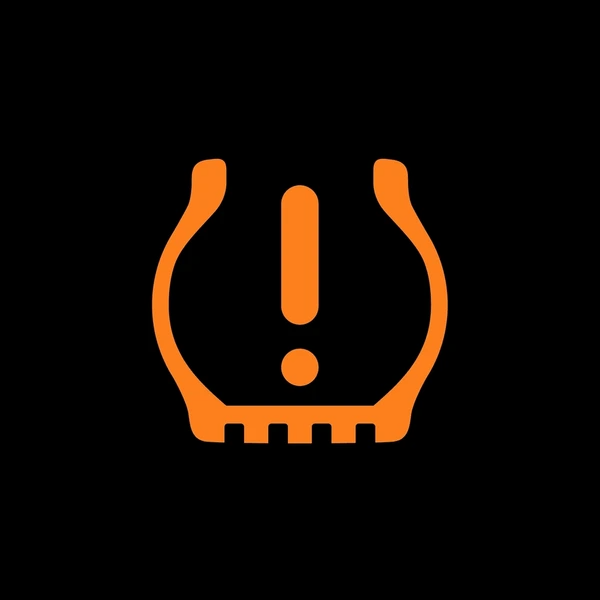
Introduction
Seeing the tire pressure light illuminate on your dashboard can be a source of worry, but understanding why it appears and how to address it can keep you safe on the road. This warning light is part of the Tire Pressure Monitoring System (TPMS) and serves as an alert that one or more of your tires may not have the proper air pressure. Proper tire pressure is crucial for safety, fuel efficiency, and tire longevity. In this guide, we’ll explore what triggers the tire pressure light, how to resolve common issues, and why maintaining correct tire pressure is essential for every driver.

What is the Tire Pressure Light?
The Tire Pressure Light, also known as the Tire Pressure Monitoring System (TPMS) warning light, is an important safety feature in modern vehicles. It is designed to alert the driver when one or more tires have significantly low air pressure, which can compromise vehicle handling, increase tire wear, and reduce fuel efficiency.
Why the Tire Pressure Light Comes On
The Tire Pressure Light can illuminate for several reasons, including:
- Underinflated tires: This is the most common cause. Tires can lose air pressure over time due to natural leakage or punctures.
- Sudden air loss: In case of a rapid air loss due to a tire puncture or damage, the TPMS will detect the pressure drop and activate the warning light.
- Temperature changes: Significant temperature fluctuations can affect tire pressure and trigger the TPMS warning.
- TPMS sensor malfunction: In some cases, the TPMS sensors themselves may fail, causing the light to illuminate even when tire pressures are correct.
Importance of Proper Tire Pressure
- Safety: Underinflated tires can lead to premature tread wear, increased risk of tire failure, and compromised handling and braking performance, potentially resulting in accidents. The National Highway Traffic Safety Administration (NHTSA) estimates that underinflated tires contribute to approximately 23,464 crashes annually.
- Fuel Efficiency: Underinflated tires increase rolling resistance, which can lead to higher fuel consumption. Studies suggest that tires underinflated by 15% can result in a 2.5% increase in fuel consumption.
- Tire Life: Improper tire pressure causes uneven wear, which can significantly reduce the tire’s lifespan. Tires that are 20% underinflated can have their life reduced by up to 50%.
- Vehicle Handling and Comfort: Properly inflated tires provide better traction, improved handling, and a smoother ride. Underinflation can lead to increased wear on the tire sidewalls, compromising the vehicle’s stability and comfort.
How to Check Tire Pressure
- Use a Reliable Tire Gauge: Invest in a high-quality digital or dial tire gauge for accurate readings. Check the gauge’s accuracy periodically.
- Check Pressure When Tires Are Cold: Tire pressure should be checked when the tires are cold, as driving warms up the air inside, increasing the pressure.
- Follow Manufacturer’s Recommendations: Refer to the vehicle’s owner’s manual or the tire information placard (usually located on the driver’s door jamb) for the recommended tire pressure for your specific vehicle and load conditions.
- Inspect Tires Regularly: Visually inspect tires for signs of wear, damage, or uneven tread patterns, which can indicate improper inflation or other issues.

How to Add or Adjust Tire Pressure
- If the tire pressure is low, use an air compressor or visit a gas station with an air pump to inflate the tires to the recommended pressure.
- If the tire pressure is high, release air from the tire valve stem using a tire deflator tool or a valve stem remover until the desired pressure is reached.
- Recheck the pressure after adjusting to ensure it is within the recommended range.
What to Do if the Light Stays On
- Check and adjust tire pressures: Use a reliable gauge to check air pressure in all tires, including the spare. Adjust to the levels specified in the owner’s manual.
- Inspect tires for damage: Visually examine each tire for punctures, cuts, or wear that could lead to air leaks.
- Reset the TPMS: After adjusting pressures, reset the TPMS as per the manufacturer’s instructions to turn off the warning light.
- Seek professional help: If the warning light stays on or a tire appears damaged, have a technician inspect the vehicle.
Common Tire Pressure Light Scenarios
- The tire pressure monitoring system (TPMS) light illuminates when one or more tires are significantly under-inflated, typically 25% below the recommended pressure
- Slow leaks or temperature changes can cause gradual pressure loss, triggering the light
- The light may also indicate a TPMS sensor malfunction or battery issue
Preventive Tips for Maintaining Tire Pressure
- Check pressures at least monthly and before long trips when the tires are cold
- Have the TPMS system diagnosed if the light remains on after inflating the tires
- Replace sensors/batteries as needed to ensure proper TPMS operation
- Rotate and balance tires regularly per the manufacturer’s recommendations
Tire Pressure Light and TPMS Types
TPMSs are classified into two main categories:
- Direct TPMS: Uses pressure sensors inside each tire to directly measure the air pressure. It wirelessly transmits the pressure data to a central receiver, alerting the driver when the pressure is too low or if there is a rapid leak.
- Indirect TPMS: Monitors the rotational speed of each wheel using the anti-lock braking system (ABS) sensors. It detects pressure loss by comparing the rotational speeds, as underinflated tires have a smaller diameter and rotate faster.
When to Seek Professional Help
- If the TPMS warning light stays on after inflating tires correctly, it might indicate a sensor or system issue needing diagnosis and repair.
- For sudden or rapid pressure loss, which could mean a puncture or tire damage, seek immediate professional inspection and repair.
- For vehicles with advanced TPMS systems, such as those with monitoring and automatic inflation, professional servicing may be necessary for proper calibration and maintenance.
- When replacing tires or wheels, professional assistance is recommended to ensure proper TPMS sensor installation and system reset.

Conclusion: Keep Your Tires in Check
The tire pressure light is more than just a warning—it’s a critical reminder to maintain proper tire pressure for your safety and vehicle’s performance. Regular checks, timely corrections, and attention to TPMS functionality can save you from accidents, extend tire life, and improve fuel efficiency. Stay vigilant, and keep your tires road-ready!
FAQs
- What does it mean if the tire pressure light is blinking?
A blinking tire pressure light usually indicates a malfunction in the TPMS system, often requiring professional diagnostics. - Can I drive with the tire pressure light on?
It’s not advisable. Driving with incorrect tire pressure can reduce handling, increase wear, and pose safety risks. - How often should I check my tire pressure?
Check tire pressure monthly or before long trips to maintain optimal performance. - Do I need to replace TPMS sensors?
TPMS sensors typically last 5–10 years. Replace them if they fail or show persistent issues. - How does temperature affect tire pressure?
Cold temperatures cause air to contract, reducing pressure. A drop of 10°F can lower tire pressure by about 1 PSI.
To get detailed scientific explanations of tire pressure lights, try Patsnap Eureka.

